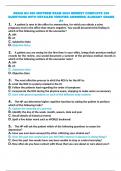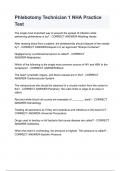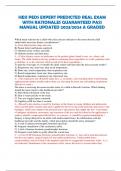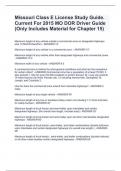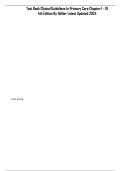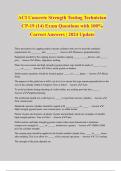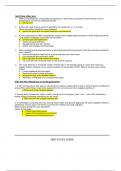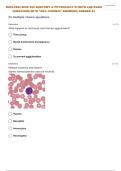Exam (elaborations)
REGIS NU 650 MIDTERM EXAM 2024 NEWEST COMPLETE 230 QUESTIONS WITH DETAILED VERIFIED ANSWERS/ ALREADY GRADE A+
- Module
- Institution
REGIS NU 650 MIDTERM EXAM 2024 NEWEST COMPLETE 230 QUESTIONS WITH DETAILED VERIFIED ANSWERS/ ALREADY GRADE A+
[Show more]
